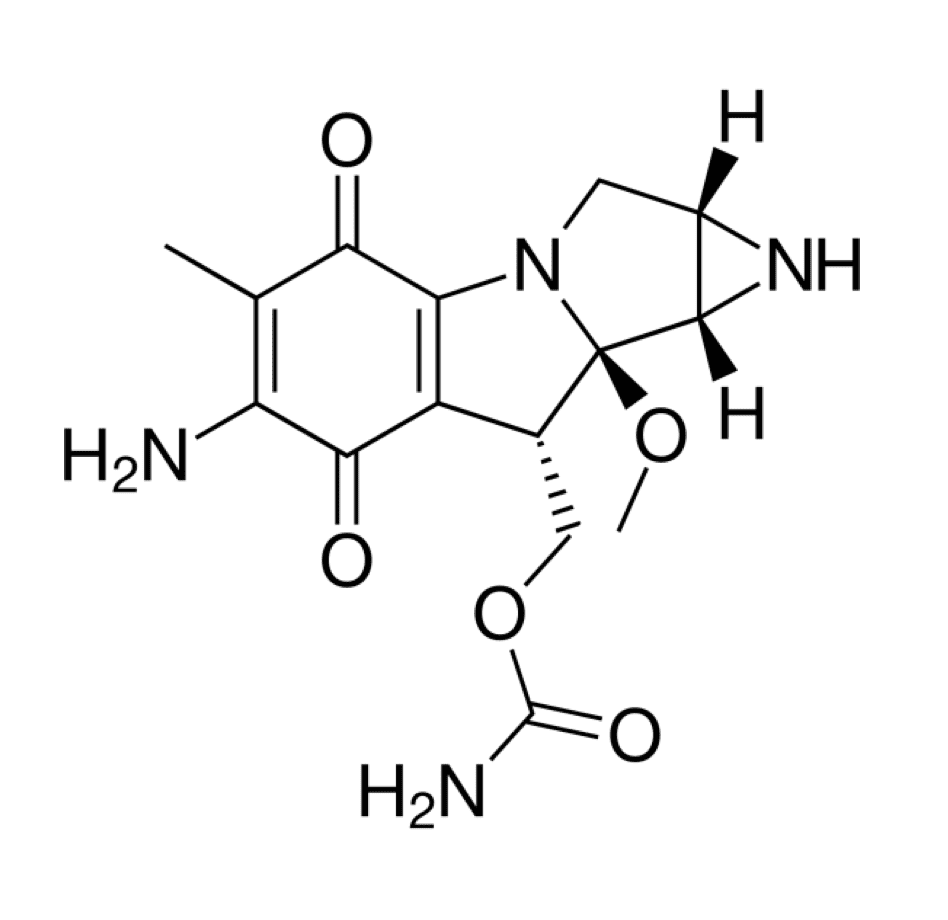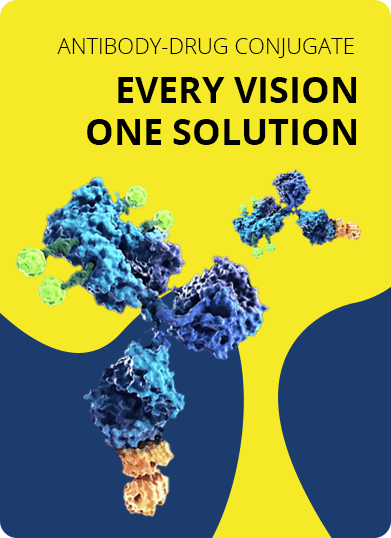- Home
- ADC Development
- DrugLnk™ Custom Linker-Payload Synthesis
- Drug Module Synthesis
- DNA Toxin Synthesis
- Mitomycin C Synthesis
Mitomycin C Synthesis Service
With our advanced "DrugLnk" synthesis platform and extensive experience in complex payload compound chemistry for antibody-drug conjugates (ADCs) development, Creative Biolabs provides highly customized ADC production services using mitomycin C as payload.
Mitomycin C (MC), an antibiotic that also possesses anti-tumor activities, was originally isolated from the microorganism Stveptomyces caespitosus. Since then, a number of structurally similar variants of MC have been discovered. Together with mitomycin C, this series of molecules are named mitomycins. Mitomycin C exhibits a variety of specific biological effects in mammalian cells, including selective suppression of DNA synthesis, stimulation of genetic recombination, mutagenesis, chromosome damage, and sister chromatid exchange. A variety of the enzymes have been demonstrated to activate MC, including NAD(P)H dehydrogenase and xanthine dehydrogenase, making it an appealing agent for intracellular tumor killing. Mitomycin C has been shown to exert a broad spectrum and potent cytotoxicity against several human neoplastic diseases and it is generally utilized as a chemotherapeutic agent in the treatment of various types of cancer, including colon, breast, and bladder cancer.
 The molecular structure of Mitomycin C.
The molecular structure of Mitomycin C.
Mitomycin C Mode of Action (MOA)
In its innate structure, mitomycin C is inert towards nucleophiles but it changes into a highly reactive bis-electrophile once reduced. MC activation begins by the reduction of the MC quinone ring into a hydroquinone. This is a process that voluntarily eliminates methanol and result in a leucoaziridinomitosene structure, which is a bis-electrophile that enables the alkylation of cellular nucleophiles, including phosphate, bicarbonate, glutathione, and DNA. DNA alkylation is major MOA of mitomycin C induced cell killing. Continuous DNA alkylation at the 1 and 10 positions of the leucoaziridinomitosene produces a cytotoxic inter-strand crosslinker, which links the N2 of opposite deoxyguanosine residues at CpG sites on double stranded DNAs. Besides DNA alkylation, redox cycling and inhibition of rRNA also play important roles in the cytotoxic effects of mitomycin C. Moreover, one study has indicated that thioredoxin reductase (TrxR) is also a cellular target for MC and it is suggested that the inhibition of TrxR activity may also contribute to the mitomycin C toxicity.
Mitomycin C-based ADCs
Several previous studies are done to exploit methods to expand the therapeutic window of mitomycin C. For example, conjugates of MC with N-succinyl-chitosan (N-succinyl-chitosan-MC) and glycol-chitosan (glycol-chitosan-MC) showed improved in vitro drug release properties and enhanced anti-tumor activity. As a leader in antibody production and bio-conjugation, Creative Biolabs offers novel linkers and conjugation strategies for the development of innovated mitomycin C-based ADCs.
With our well-established "DrugLnk" organic synthesis platform, the experienced scientists here at Creative Biolabs is dedicated to help you develop mitomycin C -linker complexes using readily available or customized linkers for antibody conjugation in a timely and cost-effective manner. Our customarily tailored services and high quality products will contribute greatly to the success of your projects.
Creative Biolabs also provides other various services regarding ADC development. Please feel free to contact us for more information and a detailed quote.
For Research Use Only. NOT FOR CLINICAL USE.

Online Inquiry
Welcome! For price inquiries, please feel free to contact us through the form on the left side. We will get back to you as soon as possible.
